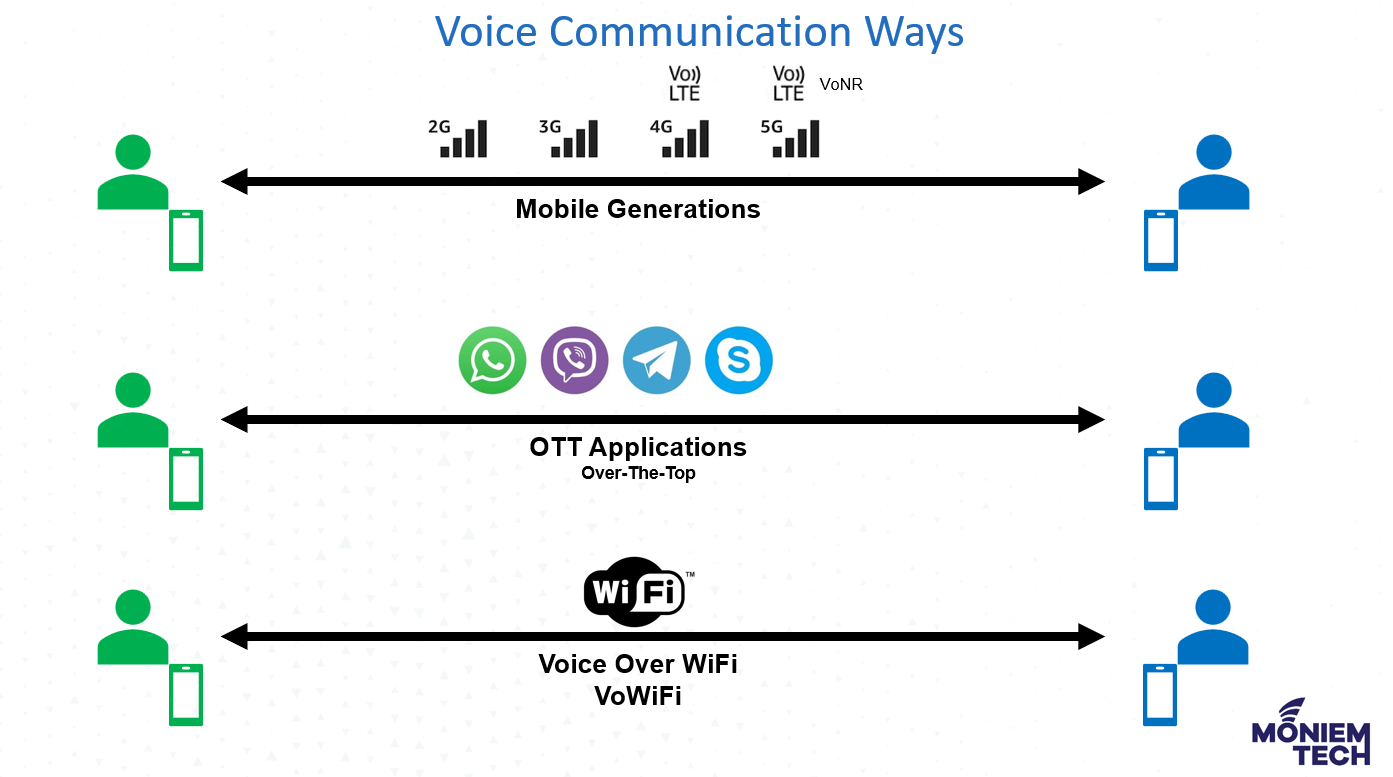As per the Mobile Data Moves Indoors report, 80% of Mobile Traffic comes from Indoor locations. This means that good coverage and QoS in the building/indoors are a MUST. Let’s focus on the primary service in the wireless industry which is Voice Call.
Voice Communication Methods
Support voice communication between two parties, in many ways, are different in reliability, security, cost, and QoS as below:

- Mobile Generations from 2G to 5G
This is the normal way to communicate between two parties, is to purchase a mobile phone with a SIM card and simply make a call. If you’re in the circuit switch domain (2G/3G) or the packet switch domain (4G/5G) you will need a good coverage to make the call. For 4G and 5G, VoLTE/VoNR will be the best option to provide HD voice calls.
Challenge: To provide good coverage with stable QoS. - OTT (Over-The-Top) Applications
Today, OTT providers like WhatsApp, Facebook Messenger, Viber, Instagram, etc. are offering personalized, differentiated voice and messaging services and are a real threat to telecom service providers. These real-time communication services are the heart of service providers and deliver most of their revenues. Therefore, to compete, telecom network operators need to take these core telecom services beyond the plain, standard service offerings and attract new, and retain existing, customers. IMS and VoLTE provide a natural route for operators to compete with OTT, and preserve their value to users.
Challenge: Can’t control these applications’ policy, privacy, or QoS. - Voice Over WiFi (VoWiFi)
Mobile service providers are looking for ways to improve spectrum utilization and access for subscribers. Ever-increasing data needs increase costs and cause frustration with the network. 80% of calls are in-building, but structural penetration is worse at higher frequencies (LTE). There is never enough spectrum, even though VoLTE has 3x the spectral efficiency of CS LTE, it still cannot cope. And in-building issues harm the customer UX, device battery life, and macro RAN performance.
VoWiFi can offer a solution to both spectrum and UX that enables mobile carriers to improve service while decreasing their costs.
VoWiFi Added-Value
Extending the access networks to Wi-Fi allows operators to fully embrace the global aspect of Wi-Fi availability and provide their customers with cost-effective access to their services while roaming removes the need to look for alternative communication means. It also allows consumers to access their services while using popular commuting services such as undergrounds, ferries, trains, or busses previously unavailable due to coverage restrictions.
VoWiFi is the only voice coverage solution that has the potential to follow users wherever they go and to be used anywhere in the world where Wi-Fi hotspots are available at minimum costs.
VoWiFi calling also offers operators an opportunity to combat OTT service providers for two reasons:
- First, with Wi-Fi coverage, voice, and messaging can be provided at lower costs, reducing in this way OTTs’ price advantage. This is possible because operators can rely on existing Wi-Fi networks instead of investing in new Wi-Fi coverage footprint, and Wi-Fi calling can share similar infrastructure with IMS-based VoLTE.
- Second, unlike OTT service providers, operators can offer seamless call transfer support between Wi-Fi and LTE (using VoLTE), and specific support in the device for migrating between the two networks.
